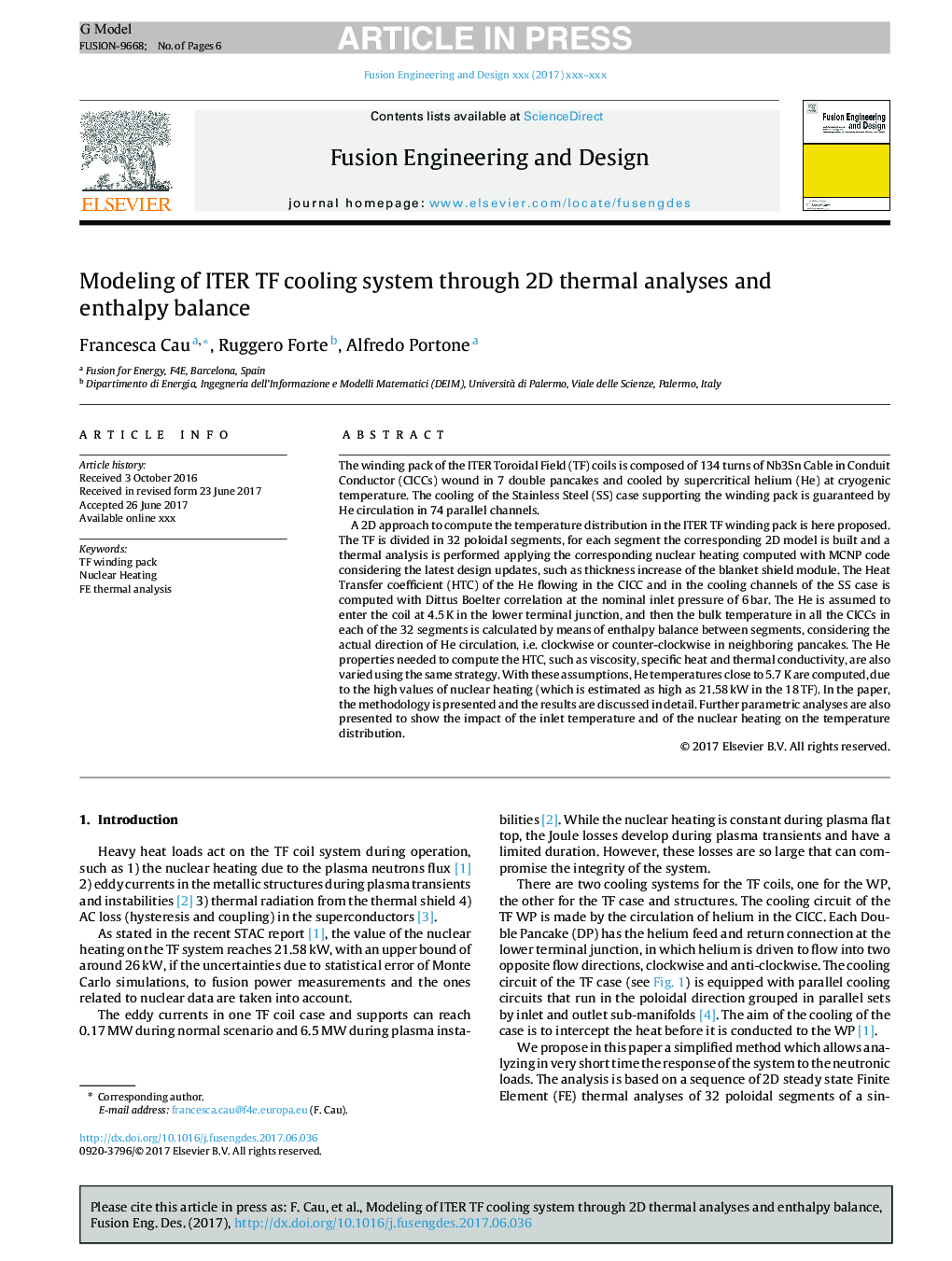| Article ID | Journal | Published Year | Pages | File Type |
|---|---|---|---|---|
| 6743748 | Fusion Engineering and Design | 2017 | 6 Pages |
Abstract
A 2D approach to compute the temperature distribution in the ITER TF winding pack is here proposed. The TF is divided in 32 poloidal segments, for each segment the corresponding 2D model is built and a thermal analysis is performed applying the corresponding nuclear heating computed with MCNP code considering the latest design updates, such as thickness increase of the blanket shield module. The Heat Transfer coefficient (HTC) of the He flowing in the CICC and in the cooling channels of the SS case is computed with Dittus Boelter correlation at the nominal inlet pressure of 6Â bar. The He is assumed to enter the coil at 4.5Â K in the lower terminal junction, and then the bulk temperature in all the CICCs in each of the 32 segments is calculated by means of enthalpy balance between segments, considering the actual direction of He circulation, i.e. clockwise or counter-clockwise in neighboring pancakes. The He properties needed to compute the HTC, such as viscosity, specific heat and thermal conductivity, are also varied using the same strategy. With these assumptions, He temperatures close to 5.7Â K are computed, due to the high values of nuclear heating (which is estimated as high as 21.58Â kW in the 18Â TF). In the paper, the methodology is presented and the results are discussed in detail. Further parametric analyses are also presented to show the impact of the inlet temperature and of the nuclear heating on the temperature distribution.
Keywords
Related Topics
Physical Sciences and Engineering
Energy
Energy Engineering and Power Technology
Authors
Francesca Cau, Ruggero Forte, Alfredo Portone,
